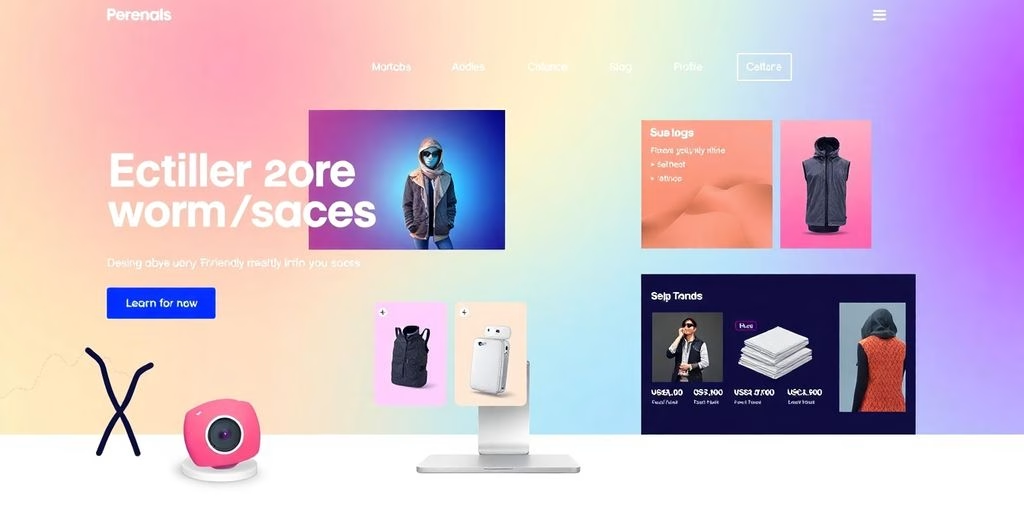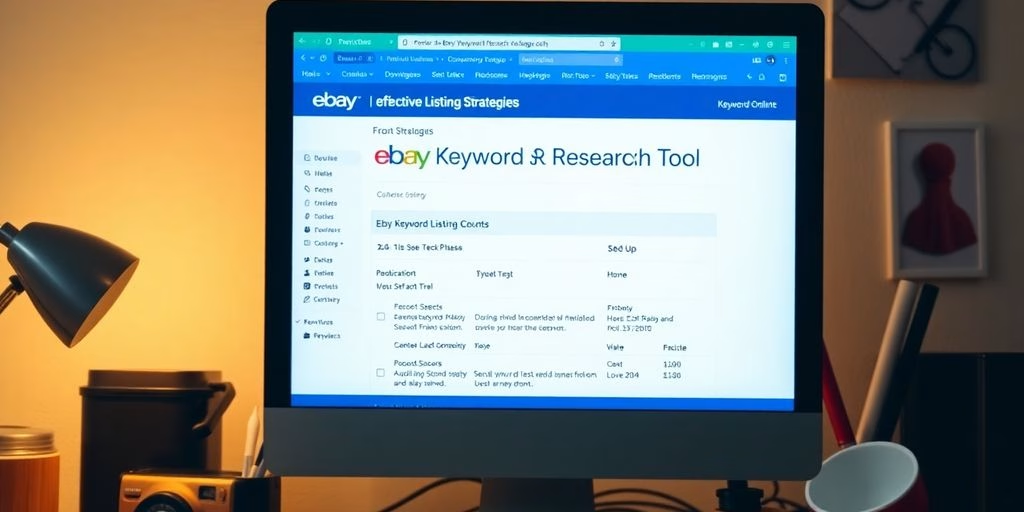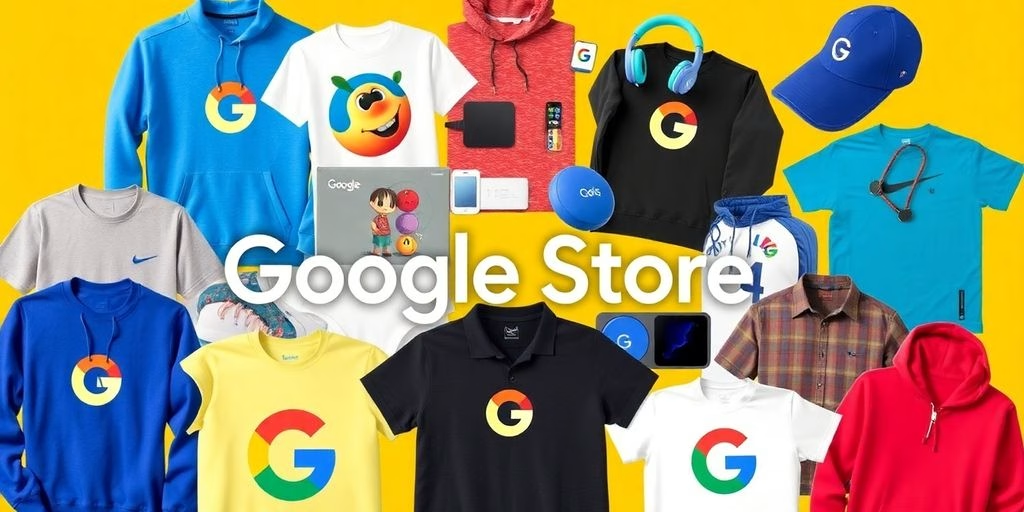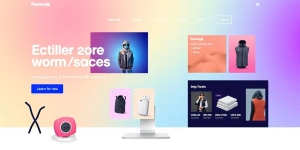In the increasingly competitive business environment, unlocking customer insights through market segmentation has become an indispensable strategy for companies seeking to understand and cater to their diverse customer base. This article explores the multifaceted approach to segmenting the market, revealing how businesses can leverage demographic, behavioral, and psychographic data to deliver personalized experiences, enhance marketing campaigns, and drive growth.
Through strategic segmentation, companies can not only identify and target specific customer groups but also predict market trends and customer behaviors, leading to more effective decision-making and a stronger competitive edge.
Table of Contents
ToggleKey Takeaways
- Strategic market segmentation enables businesses to understand and target their audience more effectively, leading to tailored marketing strategies.
- Demographic, behavioral, and psychographic data are pivotal in constructing comprehensive customer profiles for more personalized engagements.
- Customized marketing messages and campaigns crafted for specific segments can significantly increase engagement and conversion rates.
- Advanced analytics play a crucial role in market segmentation, providing insights that inform decision-making and forecast market trends.
- A cohesive customer experience orchestrated across different segments can enhance customer loyalty and drive long-term business growth.
Strategic Market Segmentation

Audience Breakdown
In the grand theater of market segmentation, audience breakdown is the opening act that sets the stage for a performance that’s both engaging and profitable. Understanding your audience is the cornerstone of any successful marketing strategy. It’s about peeling back the layers to reveal the core of consumer desires and behaviors.
To start, one must gather data on the audience’s demographics, interests, and behaviors. This data forms the foundation upon which segmentation is built. Next, it’s time to segment your audience into distinct groups, or personas, that reflect shared characteristics. For example, you might have personas for different age groups, geographic locations, or purchasing behaviors.
- Conduct market research to collect demographic data
- Utilize customer surveys to refine personas
- Implement social media listening for real-time insights
By segmenting your audience, you not only improve ad targeting but also pave the way for personalized marketing that resonates on a deeper level.
Crafting Tailored Experiences for Each Segment
In the grand theater of marketing, segmentation is the spotlight that illuminates the path to personalization. By segmenting email lists based on demographic, firmographic, and psychographic info, marketers can orchestrate a symphony of engagement. Tailoring content to each segment not only improves conversion rates but also builds stronger relationships.
Viewing experiences through the lens of diverse segments reveals opportunities to improve relevancy and satisfaction. Redesigning key customer journeys to align with segment-specific habits and pain points is crucial.
Understanding what moves each segment allows for the development of highly personalized messaging and offers. For instance, an e-commerce startup might segment its audience into distinct personas:
- Fashionistas: Frequent shoppers receiving style tips and new trends.
- Deal Hunters: Price-sensitive buyers offered timely discounts.
- Newbies: First-time visitors welcomed with educational content.
By delivering relevant and engaging experiences, companies like Company Z have seen a surge in customer satisfaction and a notable increase in conversions.
From Data to Decisions: The Segmentation Strategy
Once the data has been meticulously mined and the segments meticulously crafted, the real magic begins. Turning insights into action is where the segmentation strategy earns its keep. Here’s how to make that leap from numbers to nuance:
- Select a Segmentation Approach – Decide on a methodology, be it a priori based on business assumptions or post-hoc using data-driven algorithms. Prioritize the segmentation bases that matter most, whether they’re behavioral, demographic, or psychographic.
- Data Collection – Gather data through surveys, analytics, social listening, and CRM integration. Ensure your sample sizes are robust enough to be statistically significant.
With the right strategy, segmentation becomes less of a data puzzle and more of a roadmap to customer-centric decision-making.
- Data Analysis – Dive into the descriptive statistics and comparative models to understand how segments differ in attitudes and behaviors.
- Develop Customer Profiles – Create engaging personas for each segment, detailing their characteristics and what drives them.
- Develop Actionable Strategies – Craft personalized messaging, emotional branding, and incentives tailored to each segment’s unique preferences and behaviors.
Uncovering the Mysteries of Your Market

Demographic Detective Work: Piecing Together the Customer Puzzle
In the quest to understand the mosaic of the marketplace, demographics serve as the foundational pieces. Like a detective meticulously categorizing clues, marketers use demographic data to construct unique customer profiles. This process is not just about age or income; it’s about piecing together a picture that includes a variety of media types, preferences, and behaviors.
By delving into demographics, businesses unlock a treasure trove of insights, guiding them to optimize campaigns and boost sales.
The creation of these profiles is both an art and a science, involving:
- Identification of distinct characteristics and wants.
- Analysis of descriptive statistics and comparative modeling.
- Development of engaging personas that resonate with each segment.
This approach not only illuminates who might buy what but also why they would choose to do so, paving the way for actionable strategies that resonate with each slice of the consumer pie.
Behavioral Clues: Predicting Patterns for Profit
Sherlock Holmes had his magnifying glass; modern marketers have predictive analytics. By examining the digital footprints left by consumers, businesses can segment their audience with precision that would make any detective proud. Behavioral data is the breadcrumb trail to customer insights, leading to more effective marketing strategies and, ultimately, increased profitability.
- Example: An e-commerce platform categorizes customers into “frequent shoppers,” “price-sensitive buyers,” and “new users.” Tailored emails with product suggestions resonate with each group’s unique interests, driving sales.
Predictive models are not crystal balls, but they’re the next best thing in marketing. By sifting through historical data, these models forecast future behavior, allowing companies to proactively address challenges and seize opportunities.
The key to unlocking these patterns lies in understanding how customers interact with your brand. Whether it’s website visits, social media engagement, or purchase history, each action provides a piece of the puzzle. By piecing together these behavioral clues, marketers can craft a unique visual brand identity and segment consumers based on purchasing power, leading to more favorable outcomes.
Psychographic Profiling: Delving Deeper into Customer Psyche
Peering into the minds of your customers is no small feat, but with psychographic profiling, you can unlock the power of subtle psychology to influence others ethically. Understanding the psychological factors that drive consumer behavior is akin to having a master key for customer engagement. By tapping into values, attitudes, and lifestyles, you can craft marketing campaigns that resonate on a deeper, more emotional level.
Psychographics offer a treasure trove of insights, allowing you to develop buyer personas that feel almost clairvoyant in their accuracy. Imagine the advantage of knowing your customer’s next move before they do—like a chess grandmaster, you can anticipate and strategize accordingly. Here’s a simple breakdown of steps to leverage psychographics effectively:
- Analyze social media for sentiment and opinions.
- Identify lifestyle categories relevant to your brand.
- Craft personas that include motivations and values.
- Develop targeted marketing strategies that speak to these insights.
By embracing authenticity and leveraging social media, you can build a standout personal brand that not only speaks to your audience but also engages them in a meaningful dialogue.
Optimizing landing pages becomes a breeze when you understand user behavior. Utilize heatmaps and craft persuasive content with action-oriented language and social proof for golden conversions. It’s not just about data; it’s about making that data tell a story that your customers want to be a part of.
Winning with Personalized Marketing

The Personal Touch: Segment-Specific Messaging
In the grand theater of marketing, personalization is the star of the show. It’s not just about sprinkling first names across email campaigns; it’s about choreographing a performance that resonates with each individual in the audience. Tailoring your call-to-actions (CTAs) to align with individual preferences isn’t just a nice-to-have, it’s a must-do for a standing ovation. Utilize data insights to fine-tune your approach, and continuously test for CTA perfection to enhance the customer experience and brand perception.
By segmenting your market, you create a mosaic of opportunities. Each piece, each segment, reveals a unique pattern of desires and needs. Crafting messages that speak directly to these nuances can transform a monologue into a dialogue, fostering a deeper connection with your audience.
Here’s a quick rundown of steps to ensure your messaging hits the right note:
- Identify the key characteristics of each segment.
- Develop tailored value propositions that resonate on a personal level.
- Choose the most effective channels and cadences for outreach.
- Implement incentives that drive conversions, specific to each segment.
- Measure, analyze, and refine your strategy for continuous improvement.
Engagement Engineering: Crafting Campaigns that Click
In the alchemy of engagement, the secret ingredient is often a dash of personalization. Balancing metrics and creativity is not just a science; it’s an art that, when mastered, transforms browsers into loyal customers. Crafting campaigns that resonate with each segment requires a deep dive into the data pool, followed by a sprinkle of imaginative flair.
- Personalization in ads is the key to customer engagement.
- Expert tips for improving conversion rate optimization.
To truly captivate your audience, your campaigns must sing with relevance and echo with the unique desires of each segment. It’s about striking the right chord at the right time, ensuring every touchpoint is an opportunity to enchant and convert.
By leveraging cutting-edge engagement tactics, we can drive unparalleled engagement and advocacy. It’s about forging a bespoke strategy that resonates, breathing life into it across an array of channels, and then monitoring the ripples it creates in the market waters.
Conversion Crafting: From Browsers to Buyers
The alchemy of turning casual browsers into committed buyers is no less than a modern marketing marvel. At the heart of this transformation is the personalization of the customer experience. It’s about understanding that each click, each viewed product, and each abandoned cart tells a story—a narrative that, when listened to, can lead to a tailored journey from interest to purchase.
- Understand the customer’s journey
- Tailor the experience with relevant content
- Optimize product pages for conversion
- Employ persuasive techniques
By employing a strategic blend of data and creativity, marketers can craft campaigns that resonate on a personal level. > Personalization in ads is the key to customer engagement. It’s not just about bombarding them with messages, but about creating a dialogue that feels one-on-one, even in the vast digital marketplace. This approach not only increases the likelihood of conversion but also fosters a sense of loyalty and connection.
Remember, the goal is to guide potential customers through a seamless transition from interest to action. The Guide to Conversion Rate Optimization is a treasure trove of tactics for enhancing website performance and increasing sales. It’s about making every touchpoint an opportunity to persuade and please, ensuring that each segment feels seen and valued.
Data-Driven Dominance

The Numbers Game: Analytics in Action
In the grand casino of commerce, analytics is the ace up the marketer’s sleeve. It’s not just about having data; it’s about having the right data and knowing how to play it. With analytics in action, businesses can shuffle through the deck of customer information to reveal patterns and trends that inform strategic decisions. Here’s how the magic happens:
- Data Collection: Gathering raw numbers from various touchpoints.
- Data Processing: Cleaning and organizing data for clarity.
- Data Analysis: Applying statistical methods to interpret data.
- Insight Generation: Translating data into actionable business intelligence.
By leveraging analytics, companies can move beyond the superficial and dive into the depths of customer behavior, preferences, and needs. This isn’t just about measuring success beyond clicks; it’s about crafting a narrative that resonates with each unique segment of the audience.
The endgame? A well-played hand of segmentation strategies that leads to increased engagement, conversion, and ultimately, customer loyalty. After all, in the game of market segmentation, the player with the best insights wins.
Market Segmentation Science
In the alchemy of market mastery, market segmentation is the philosopher’s stone, transmuting raw data into marketing gold. By dissecting the customer base into distinct groups, businesses can tailor their strategies with surgical precision. This isn’t just about knowing your audience; it’s about predicting their next move before they even make it.
- Nuance: Understand the subtle differences within customer groups.
- Perspective: View your market through the lens of data-driven insights.
- Strategy: Develop targeted campaigns that resonate on a personal level.
By leveraging data-driven marketing tools, companies can orchestrate a symphony of targeted campaigns that resonate with each unique customer segment, harmonizing their marketing efforts with the rhythms of consumer behavior.
For those ready to embrace the segmentation science, the rewards are manifold. Not only does it pave the way for enhanced customer experiences and improved resource allocation, but it also sharpens the competitive edge, allowing businesses to outmaneuver rivals with the finesse of a chess grandmaster. The key is to continually refresh strategies and adapt to the ever-evolving market landscape, ensuring that your segmentation remains as dynamic as the customers it aims to understand.
The Predictive Powerhouse: Forecasting with Finesse
Harnessing the predictive analytics crystal ball isn’t just about gazing into a data-driven future—it’s about shaping it. Businesses are now the modern-day oracles, using historical data to not only forecast future behavior but to proactively address customer needs. This foresight isn’t just a neat party trick; it’s a strategic tool that can significantly impact the bottom line.
By analyzing patterns and employing machine learning algorithms, companies can predict churn, lifetime value, and even cross-selling opportunities. It’s like having a roadmap to customer satisfaction and retention.
Predictive market segmentation is particularly savvy, dividing a target audience into segments based on predictive analytics and machine learning algorithms. This isn’t just segmentation; it’s segmentation with a strategy. Here’s how it plays out in the real world:
- Identify patterns in historical data that hint at future behaviors.
- Use machine learning to forecast potential market shifts and customer preferences.
- Apply descriptive, predictive, and prescriptive modeling to anticipate market dynamics.
- Optimize marketing strategies and resource allocation for hyper-personalization.
In the end, it’s about staying ahead of the curve and ensuring that every marketing dollar is spent with precision and purpose.
Segmentation Symphony: a Cohesive Customer Experience

Conducting the Customer Journey
Imagine the customer journey as a part of market segmentation, where each movement is a touchpoint that resonates with the audience. Mapping the touchpoints along the customer journey allows you to gain a comprehensive understanding of the interactions customers have with your brand, much like a maestro comprehends every note in a score. This is not just about observing; it’s about engaging with the customer at every stage, ensuring that each note strikes a chord.
- Pre-purchase: Awareness and consideration are key here. Tailor your messaging to pique interest and answer questions.
- Purchase: This is where experiential merchandising creates lasting memories. Make the transaction more than just an exchange.
- Post-purchase: Follow up with support and appreciation. This is where loyalty is cemented.
Viewing experiences through the lens of diverse segments reveals opportunities to improve relevancy, convenience, and satisfaction. Eliminating one-size-fits-all assumptions is the first step towards a more harmonious customer journey.
Harmonizing Touchpoints Across Segments
In the grand orchestra of marketing, each customer segment is like a unique instrument. To create a symphony that resonates, marketers must ensure that every touchpoint plays in harmony. Brand harmonization is not just a lofty ideal; it’s a practical strategy that aligns visual design, messaging, and customer experience across all channels.
- Identify key touchpoints for each segment.
- Tailor the experience to align with segment-specific preferences.
- Ensure consistent messaging and branding across all channels.
By using a multi-touch funnel analysis, savvy marketers can pinpoint the touchpoints that drive customer awareness and loyalty. This approach allows for a nuanced understanding of how different segments interact with the brand at various stages of their journey.
In the pursuit of personalized marketing, remember that consistency is key. A harmonized approach ensures that each segment feels understood and valued, without the cacophony of mixed messages.
The Crescendo of Customer Loyalty
The crescendo of customer loyalty is not just a goal; it’s the magnum opus of market segmentation. Building brand loyalty is akin to conducting a symphony where each note resonates with the audience’s deepest preferences. By segmenting the market, businesses can compose a customer experience that is as personalized as it is powerful, leading to a standing ovation in sales and satisfaction.
The art of segmentation is not just about understanding who your customers are, but also about predicting what they will love next.
Here’s how segmentation strategies play a pivotal role in amplifying customer loyalty:
- By enhancing customer satisfaction, segmentation ensures that every marketing note hits the right chord.
- It allows businesses to optimize their marketing efforts, ensuring that resources are invested in the most impactful way.
- Market segmentation strategies have been shown to impact customer loyalty positively, with behavioral, psychographic, and demographic insights conducting the way.
In the end, the measure of success is seen in the loyalty of customers who not only return but also bring others into the fold through positive word-of-mouth. It’s a virtuoso performance in the market space, where the encore is a thriving, loyal customer base.
Dive into the ‘Segmentation Symphony’ and master the art of delivering a seamless customer experience with our expert guidance. Visit our website to explore how we can help you orchestrate a cohesive strategy that resonates with your audience. Don’t miss the beat; connect with us today to amplify your brand’s harmony!
Conclusion: Market Segmentation
As we wrap up our journey through the kaleidoscope of market segmentation, it’s clear that the art of understanding customers is akin to finding a golden key in a haystack of data. By slicing through demographics, preferences, and behaviors, businesses can tailor their strategies with the precision of a master chef crafting a signature dish. The power of segmentation is not just in the knowing, but in the doing—turning insights into action that resonates with each unique slice of the market pie.
So, let’s raise a toast to the segments that help us see not just a crowd, but a constellation of opportunities, each star shining with the potential for connection, conversion, and growth. Here’s to the savvy marketers who use these insights as their North Star, navigating the ever-shifting seas of consumer desires with the compass of segmentation!
FAQs
What is market segmentation and how does it unlock customer insights?
Market segmentation is the process of dividing a market into distinct groups of buyers with different needs, characteristics, or behaviors. It helps businesses unlock customer insights by identifying and understanding these segments to tailor marketing strategies, products, and services to meet the specific needs of each group.
Why is demographic segmentation important in marketing?
Demographic segmentation is crucial because it categorizes the market based on demographic factors like age, gender, income, and education. This allows marketers to create more targeted and effective campaigns by understanding the preferences and behaviors of different demographic groups.
How can customer insights contribute to product development?
Customer insights and market segmentation can guide product development by revealing consumer needs, preferences, and pain points. Businesses can use this information to design or improve products that better satisfy their target segments, leading to increased customer satisfaction and loyalty.
What role does analytics play in market segmentation?
Analytics plays a pivotal role in market segmentation by processing large amounts of customer data to identify patterns, predict behaviors, and define segments. It provides the quantitative backing needed to make informed decisions about targeting and personalization.
How does segmentation lead to personalized marketing campaigns?
Segmentation leads to personalized marketing by grouping customers with similar characteristics. Marketers can then craft messages and offers that resonate with each segment, making campaigns more relevant and increasing the likelihood of engagement and conversion.
What are the benefits of using AI in customer insights and market segmentation?
AI enhances customer insights and market segmentation by enabling the processing of vast datasets for deeper analysis, pattern recognition, and predictive modeling. This results in more accurate segmentation, improved targeting, and the creation of personalized experiences at scale.









































































































